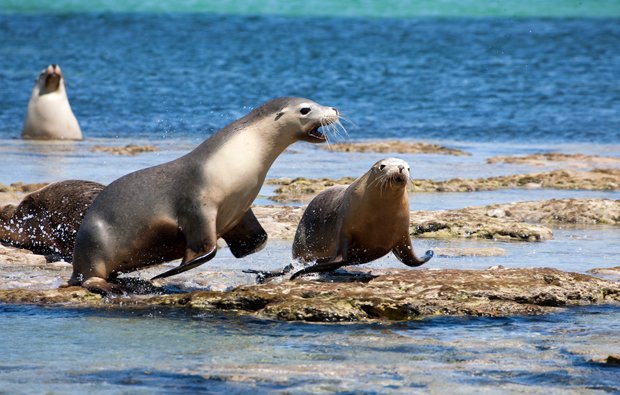Sea lion pups remember mum’s voice

MOST CHILDREN RECOGNISE THE voice of their mother calling out their name, whether they are in the middle of a play ground or ten aisles away in a supermarket. But this kind of maternal sensitivity is not unique to humans. According to scientists from Macquarie University, sea lions are also able to recognise their mum’s voice, even well after they’ve been weaned.
Earlier this year, Benjamin Pitcher, a PhD student from Macquarie University, in Sydney, found that three-year-old Australian sea lions responded to their mother’s voice more than the voices of unknown female sea lions.
LAUNCH THE GALLERY
The pup-attraction calls of six sea lion mothers were recorded within a year of them giving birth, and played to the pups two years later. At that point the pups were adults and completely independent from their mothers for at least 18 months. Not only did the pups look at and call out to the speaker playing their mother’s voice, but in some cases they even approached it.
“I was surprised by the results,” says Benjamin. “I do not know why adolescent Australian sea lions would respond to their mother’s calls as strongly as a two-month-old pup, because they are no longer receiving milk from her.”
The research suggests that sea lions have such a strong response to their mother because they have to frequently part and re-unite. “The mother spends approximately two days at sea and two on land with the pup and repeats this pattern for the 18 months of care,” says Benjamin. “To survive, pups and mums must be able to find each other reliably.” In addition, sea lion mothers are aggressive towards pups that aren’t theirs.
The study also shows that sea lions are set to join the ranks of elephants and fur seals as animals that never forget. All three animals are known to have long-term memories when it comes to voice recognition. This is likely to be because all of those mammals live in colonies in close proximity to each other, where the chance of mistaking a relative with another individual is extremely high.
LAUNCH THE GALLERY
Read more about sea lions in Australian Geographic, issue 101 (January – March, 2011). See a gallery of award-winning images, including a sea lion photo from Darren Jew, who snapped the shot during his assignment for Australian Geographic.
RELATED STORIES

